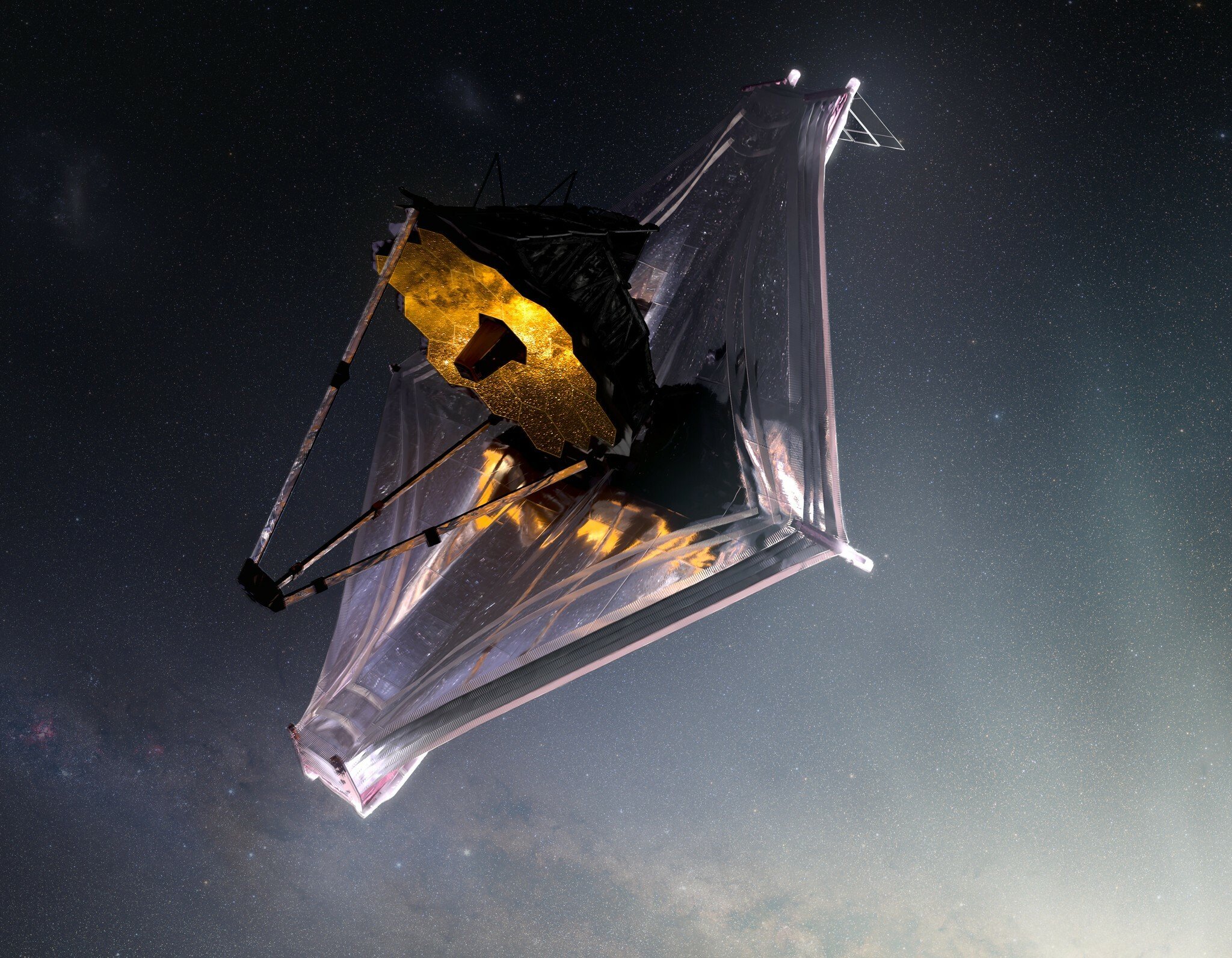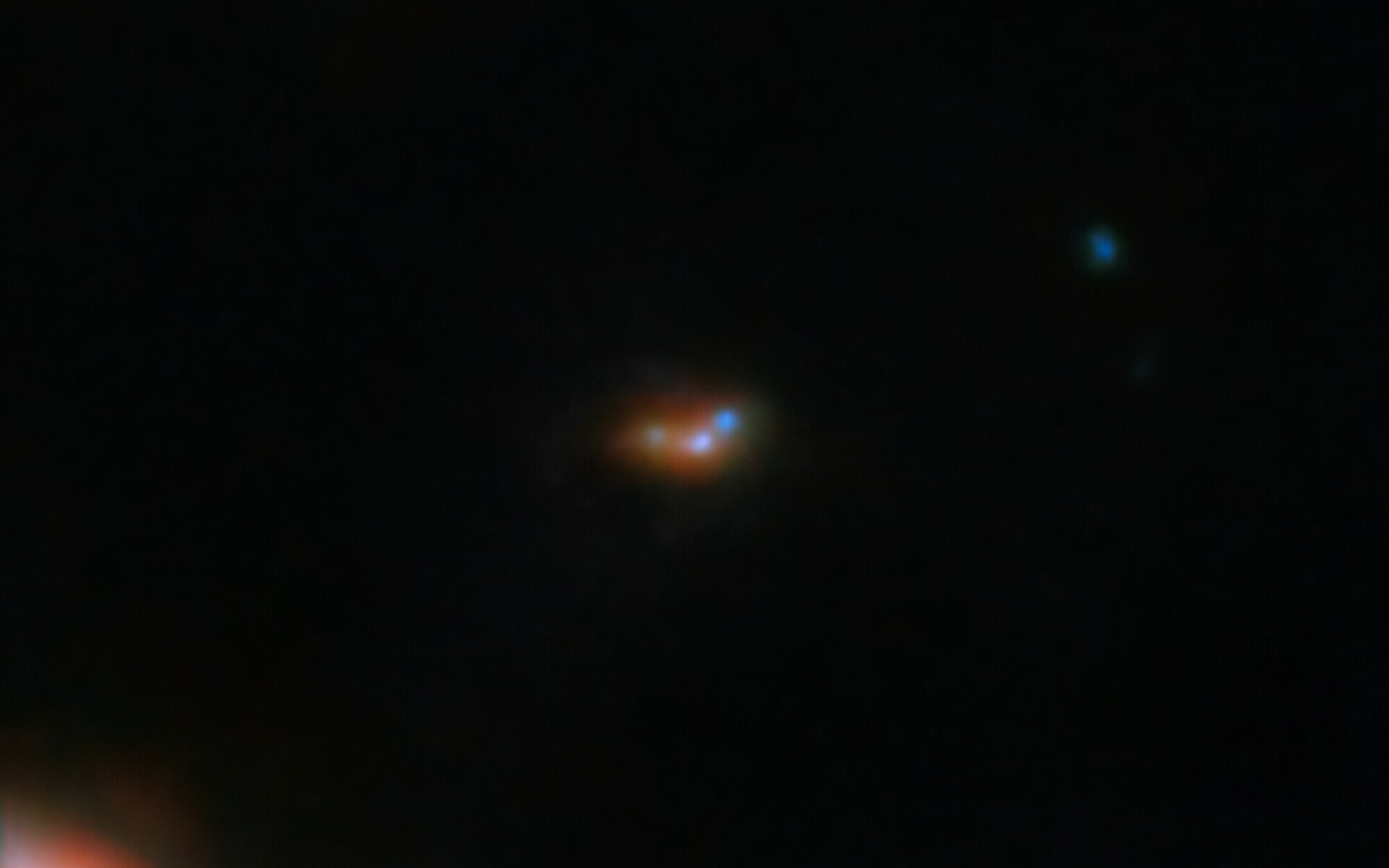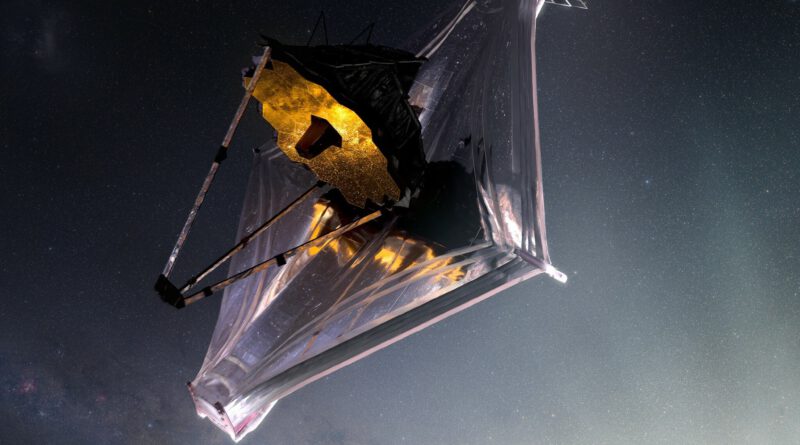Scientists found an enigma in deep space. The Webb telescope solved it.

The powerful James Webb Space Telescope has solved another cosmic mystery.
Astronomers can see a type of light emitted billions of years ago from some of the earliest galaxies, yet many scientists don’t think this light should be visible. That’s because, at a crucial time in the universe’s history — a time called “reionization,” when the first stars began to glow — space was absolutely packed with gas spawned by the Big Bang (the pivotal explosion that created our universe).
Such thick gas should shroud this light from the first stars and galaxies. But it doesn’t. We can see light emitted from early hydrogen atoms (the smallest atom, and one of the first elements ever formed).
“One of the most puzzling issues that previous observations presented was the detection of light from hydrogen atoms in the very early Universe, which should have been entirely blocked by the pristine neutral gas that was formed after the Big-Bang,” Callum Witten, an astronomer at the University of Cambridge who led the new Webb research on this mystery, said in a statement. “Many hypotheses have previously been suggested to explain the great escape of this ‘inexplicable’ emission.”
But the Webb telescope, built with a huge mirror to detect extremely faint light and resolve extremely distant objects, has provided a compelling answer.
It turns out the “inexplicable” light previously observed coming from a particular ancient galaxy isn’t just coming from a single galaxy. Webb found that these emissions are actually coming from groups of galaxies — we just couldn’t see them. These early galaxies were colliding and merging with one another (galaxies often collide), ultimately creating an extremely active cosmic environment. In the new research, published in the peer-reviewed journal Nature Astronomy, researchers found that this intensive activity — galactic collisions stoking the vigorous creation of new stars — generated strong light emissions and also cleared the way for the light to escape into space.
The Webb image below shows the distant galaxy EGSY8p, located a whopping 13.2 billion light-years from Earth, surrounded by two other smaller galaxies — something previous observations couldn’t detect.
“Where Hubble was seeing only a large galaxy, Webb sees a cluster of smaller interacting galaxies, and this revelation has had a huge impact on our understanding of the unexpected hydrogen emission from some of the first galaxies,” Sergio Martin-Alvarez, a researcher at Stanford University who worked on the new study, noted in a statement.

Astronomers will continue to direct Webb at some of the earliest galaxies that ever formed, with the greater goal of understanding how galaxies, like our own Milky Way, came to be.
The Webb telescope’s powerful abilities
The Webb telescope — a scientific collaboration between NASA, the ESA, and the Canadian Space Agency — is designed to peer into the deepest cosmos and reveal new insights about the early universe. But it’s also peering at intriguing planets in our galaxy, along with the planets and moons in our solar system.
Here’s how Webb is achieving unparalleled feats, and likely will for decades:
– Giant mirror: Webb’s mirror, which captures light, is over 21 feet across. That’s over two-and-a-half times larger than the Hubble Space Telescope’s mirror. Capturing more light allows Webb to see more distant, ancient objects. As described above, the telescope is peering at stars and galaxies that formed over 13 billion years ago, just a few hundred million years after the Big Bang.
“We’re going to see the very first stars and galaxies that ever formed,” Jean Creighton, an astronomer and the director of the Manfred Olson Planetarium at the University of Wisconsin–Milwaukee, told Mashable in 2021.
– Infrared view: Unlike Hubble, which largely views light that’s visible to us, Webb is primarily an infrared telescope, meaning it views light in the infrared spectrum. This allows us to see far more of the universe. Infrared has longer wavelengths than visible light, so the light waves more efficiently slip through cosmic clouds; the light doesn’t as often collide with and get scattered by these densely packed particles. Ultimately, Webb’s infrared eyesight can penetrate places Hubble can’t.
“It lifts the veil,” said Creighton.
– Peering into distant exoplanets: The Webb telescope carries specialized equipment called spectrographs that will revolutionize our understanding of these far-off worlds. The instruments can decipher what molecules (such as water, carbon dioxide, and methane) exist in the atmospheres of distant exoplanets — be they gas giants or smaller rocky worlds. Webb will look at exoplanets in the Milky Way galaxy. Who knows what we’ll find?
“We might learn things we never thought about,” Mercedes López-Morales, an exoplanet researcher and astrophysicist at the Center for Astrophysics-Harvard & Smithsonian, told Mashable in 2021.
Already, astronomers have successfully found intriguing chemical reactions on a planet 700 light-years away, and as described above, the observatory has started looking at one of the most anticipated places in the cosmos: the rocky, Earth-sized planets of the TRAPPIST solar system.
